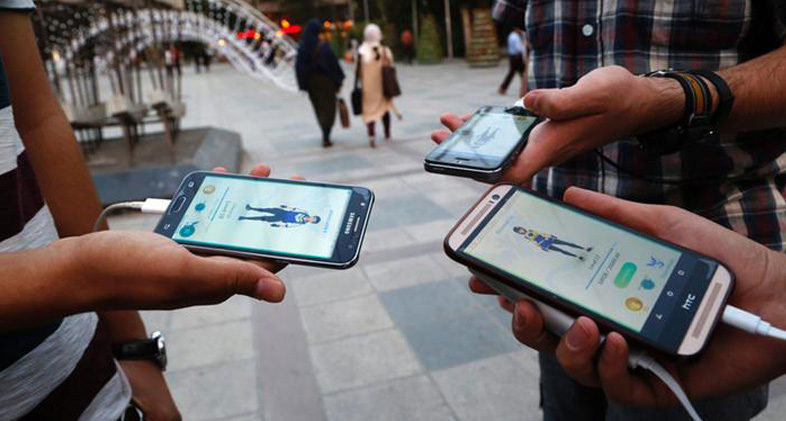How to Build Professional Connections and Grow Your Career
How to build a strong professional network and grow your career with practical techniques and examples for career advancement and professional skills.

A study of the growth statistics of mobile and fixed-line internet in Iran from 1990 to 1404 until today.
What are the growth statistics for mobile and landline internet in Iran? I'll check it out today.
According to reports from the Ministry of Communications, by 2015, the number of landline subscribers will be 30 million and the number of mobile subscribers will be 72 million.
According to statistics, there are 8 million fixed-line internet subscribers and 19 million mobile internet subscribers in Iran.
But how much has this trend grown to date?
By 2015, official statistics showed that the number of landline subscribers in Iran was around 30 million and the number of mobile subscribers reached 72 million.
In the field of Internet, in the same year there were approximately 8 million active Internet users via landline and 19 million mobile Internet users.
These statistics indicated that mobile internet was still in its infancy in Iran and that fixed internet had a relatively larger share in the home internet space.
In the years after 2015, mobile internet access and mobile phone penetration in the country increased significantly.
Communication infrastructure was developed and operators expanded new generation mobile networks.
For example, reports show that between 2017 and 2022, the number of mobile broadband Internet subscribers increased from approximately 53 million 244 thousand subscribers to 105 million 180 thousand subscribers.
This impressive growth demonstrated the high interest of users in mobile internet and the ability of mobile networks to meet demand.
During the same period, mobile internet penetration (mobile broadband) rose from about 66.62 percent to about 124.18 percent.
In contrast, fixed internet had much more limited growth.
Infrastructures such as xDSL continued to play an important role, but the increase in the number of fixed subscribers faced technical, economic, and geographical barriers.
As the years 1400 and 1402 approached, statistics showed that the growth rate of mobile internet was still high, but fixed internet not only did not grow rapidly, but in some periods it even decreased.
According to regulatory reports in the winter of 1402, the number of fixed broadband Internet subscribers was announced at around 11 million and 105 thousand people. The fall report also shows that fixed subscribers experienced a similar number of 11 million in the fall of 1402.
Also, in the winter of 1402, the number of mobile phone subscribers grew and reached more than 152 million subscribers.
In the same report, the number of landline subscribers decreased; in the winter of 1402, the number of landline lines decreased from 29 million to about 28 million.
Therefore, during this period, the gap between mobile Internet growth and the fixed-line situation widened.
In the spring of 1404, the regulatory report indicated that the fixed internet penetration rate had reached about 13 percent and the mobile internet penetration rate had exceeded 140 percent.
This means that the number of mobile internet subscriptions (mobile broadband) is greater than the country's population (because many people have multiple subscriptions).
Reports also indicate that the share of fixed internet in the country's total internet market remains low and users have increasingly turned to using mobile internet.
Meanwhile, a report on household access announced that by 1404, the goal is for 80 percent of households to have access to high-speed internet.
If this goal is achieved, it will indicate a plan to improve fixed internet infrastructure and expand its coverage.
If we take the situation of 2015 as a basis (28-30 million fixed lines, 72 million mobile, 8 million fixed internet, 19 million mobile internet), and the situation of 1402-1404 as a criterion, we can draw the following conclusion:
The growth of mobile internet has been very significant.
From 19 million mobile subscribers in 2015, we reached more than 152 million subscribers in the winter of 2023.
This means we have had an almost eightfold increase in the number of mobile subscribers (if we take the same 152 million threshold as a benchmark).
In contrast, fixed internet has grown from about 8 million users in 2015 to about 11 million fixed broadband users in 2023; an increase, but less than 2 times the growth compared to the base.
This stark difference indicates that users have preferred to switch to mobile services or that fixed internet restrictions have slowed its growth.
Also, mobile internet penetration has increased from 66 percent to around 130-140 percent and more in recent years, while fixed internet penetration remains at around 13 percent.
In fact, mobile Internet has not only become the dominant means of accessing the web, but its growth has been much faster than fixed Internet.

One of the most important reasons for the rapid growth of mobile internet is the extensive infrastructure of mobile operators and their universal coverage.
The creation of cell towers, the development of new generations of 3rd, 4th, and 5th generation, investment by operators, and competition in service provision have led to users being attracted to mobile internet more quickly.
Second, ease of use and no need to install complex equipment for home users was another important factor.
Unlike fixed internet, which required cabling, a fixed modem, and local infrastructure, mobile provided access with a simple SIM card.
Third, the increase in the consumption of mobile content, applications, social networks, and mobile-based services has increased the demand for mobile internet.
Users preferred to be always available, and mobile made this possible.
Fourth, constraints such as the costs of installing and maintaining a fixed network and weak infrastructure in some geographical areas have slowed the development of fixed Internet.
Fifth, government and operator policies were geared towards encouraging mobile internet and focusing on rural mobile coverage, due to the cost-effectiveness of installing and launching mobile networks in remote areas.
The growth of fixed internet was limited for several reasons.
Weaknesses in transmission and distribution infrastructure, the high cost of implementing fiber-to-the-door lines in urban and rural areas, problems with legal and economic agreements, and operators' prioritization of capital to mobile internet were all contributing factors.
Also, competition with mobile internet, which had advantages such as mobility, the ability to use it anywhere, and not being dependent on fixed equipment, put fixed internet in a more difficult competitive position.
In some cases, the desired quality of fixed internet has been reduced due to maintenance issues, cable length, signal loss, and technical limitations, causing users to actually experience a better mobile internet experience than fixed internet, especially in areas with poor fixed infrastructure.
In the current market, the share of mobile internet is dominant; many users even use mobile internet for home use.
Fixed internet remains especially popular among users who need high stability and consistent speed (such as corporate work, offices, and some high-need home users).
Given that the mobile internet penetration rate was reported to be around 140 percent in the spring of 1404, it can be concluded that on average, each person has at least one and sometimes more than one mobile subscription.
On the other hand, the fixed internet penetration rate is stated in the same report to be approximately 13 percent.
This situation shows that fixed internet has not yet been able to find a widespread place among ordinary users in the country.
Although the growth of mobile internet has accelerated, it also faces challenges, such as quality of service during peak hours, indoor coverage, speed and data cost limitations, and core network infrastructure issues.
For fixed internet, there are challenges such as the cost of deploying fiber optic to the door, maintenance issues, and heavy investment to rebuild old networks.
In the future, the integration of hybrid technologies (such as combining fiber optics and mobile technology, fixed wireless Internet and higher mobile generations) could be a solution to improve the state of fixed Internet.
Also, focusing on improving quality, reducing latency, and increasing mobile internet speeds through 5G and then future technologies will continue the growth path.
The government's stated goal of providing 80 percent of households with high-speed internet access by 2025 indicates that plans for the development of fixed internet infrastructure and hybrid development are on the agenda.
The trend of the last decade in Iran shows that mobile internet has grown significantly and has become the dominant means of accessing the internet.
In contrast, fixed internet, despite its inherent value for sensitive applications, has grown less and has been limited to a specific segment of users.
From 2015 to 2025, the number of mobile subscribers has grown several times, while fixed internet has experienced only limited growth.
This difference is due to technical, economic factors, user preferences, and development policies.
However, for wider access, better quality, and connectivity stability, the technological combination of mobile and fixed internet seems to play a key role in the future.
Source » Itroz Blog


Follow the guide to set up your domain email on any device or OS, including both smartphones and computers, quickly and easily.

This guide is useful for automatically forwarding your website emails set up on your domain to other email accounts, such as Gmail and others.

Step-by-step guide to install Thunderbird on macOS; download, setup, and manage multiple email accounts easily and efficiently.
Comments (0)